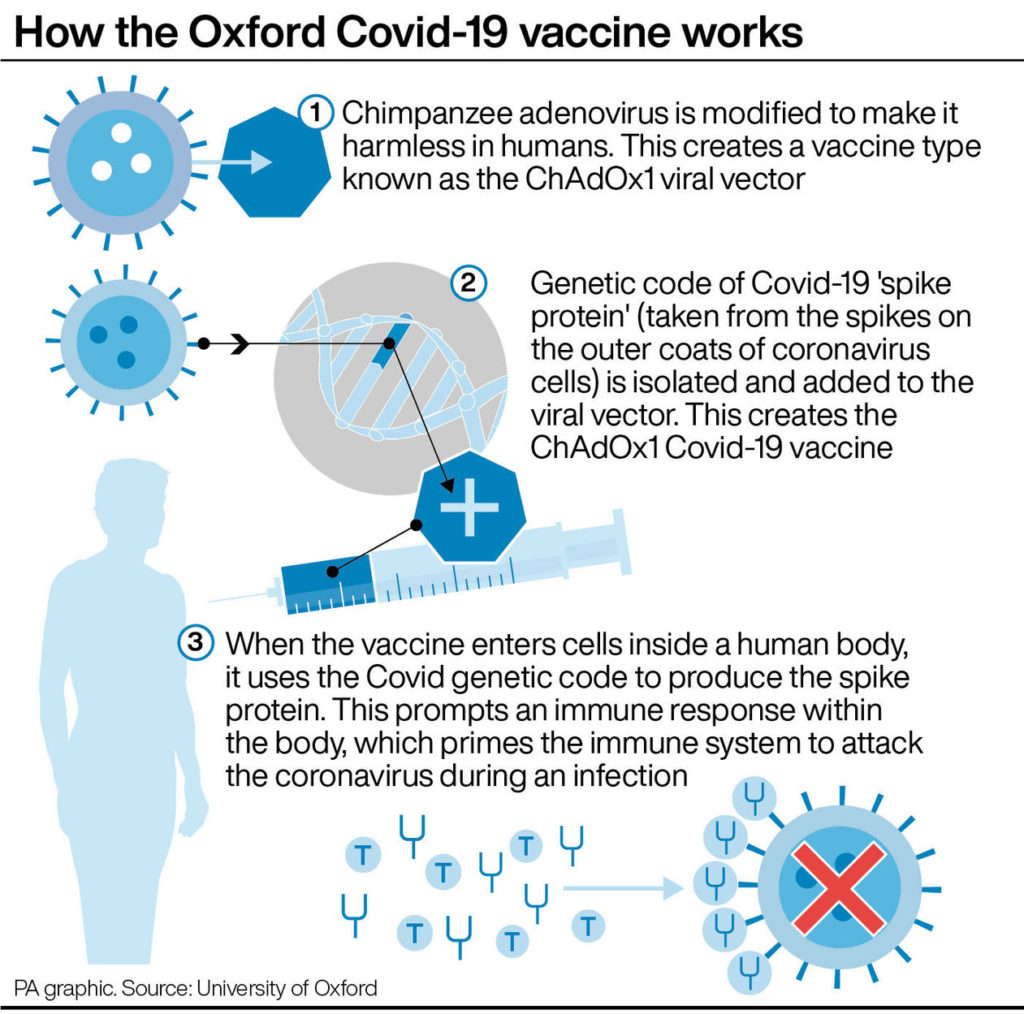After vaccination the vaccine instructs the body to produce spike proteins. It is the spike protein that the body reacts to and over a period of 14-21 days instructing it to produce antibodies that protect us from the coronavirus SARS Cov-2.
Typically these spike proteins are produced in the liver.
It takes a few hours for the liver to produce them they then enter the bloodstream and travel throughout the body.
In the meantime the lymph glands and other parts of the immune system start making inflammatory substances which induce the symptoms such as fever, fatigue, tiredness, headache and redness at the injection site. These are the side effects some see after vaccination.

These spike proteins will also attach themselves to different cells and tissues, e.g. the cells lining blood vessels, muscle tissue, joints, heart, lungs, nerves, kidney, intestines, etc.
Inflammatory substances, cytokines, may recognise some of those cells as foreign and attack them. This can lead to joint and muscle pain, rashes, dizziness, rapid heart rate etc.
In some individuals the spike proteins may initiate blood clots. Spike proteins are thought to trigger platelets to clump together (platelet aggregation).
Clots in our blood vessels can be tiny and often not cause any problems and eventually dissolve occasionally over time they may grow big enough to travel to the brain. This is the cause of strokes. There is also the possibility that they travel to the heart causing a heart attack or to the lungs where pulmonary embolisms may occur.
If they form in blood vessels in the legs they cause DVT, deep vein thrombosis. Sometimes they may be very small and travel and lodge in different parts of our organs and not cause any noticeable effect, but may do minor damage to our organs.
The number of people that are affected in this way are very few and of those even fewer go on to develop the sever symptoms.




